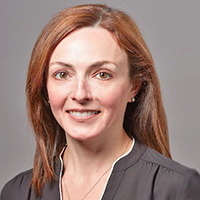At the corner of the white board in my office, I have the following notation: 3/19: U.S. Cases: 16,621; U.S. Deaths: 225.
That was in the early days of our implementing Incident Command at the Great Plains Area office in response to the global COVID-19 pandemic. Nearly five months later, there are over 5.4 million COVID-19 cases in the United States and 170,000 deaths.
In the third week of March, I traveled to Rosebud Hospital to serve as acting clinical director. As I met with the staff and sat with other members of the executive team, we felt as though we needed to completely restructure patient flow and processes. We worked as if a tsunami was about to hit - initiating an outside screening check point to identify patients presenting with respiratory complaints; erecting physical barriers between patient care areas designated for “sick” and “well” visits; initiating emergency credentialing procedures to allow outpatient staff to assist in the management of emergency room visits in the event of an influx of sick patients.
Every sector of the facility was affected. I remember walking to the pharmacy department and speaking with the supervisor on Tuesday morning. I said, “I’d like to initiate drive-through pharmacy services so patients don’t have to come into the facility to pick up medications. And I’d like to ‘go live’ on Thursday.” He didn’t flinch. We had many staff meetings, both virtually and outdoors during that week - often after-hours out of necessity. I was impressed at the staff’s engagement. We developed teams to assist the efforts of the Incident Command team, one to develop new signage to direct patients and visitors through the hospital; one to block waiting rooms in the interest of social distancing; and one to draft public service announcements notifying the public about the hospital’s planned service changes.
I learned many lessons in the few days that I was onsite. First, I realized how much foot traffic through the hospital was as a result of pharmacy. As soon as we initiated drive-through pharmacy services, the hospital waiting rooms emptied. A drive through pharmacy is one way to reduce the risk of exposure, which is especially important for patients due to COVID-19. I also learned that keeping lines of communication open was essential. Even if I didn’t have all the answers, it was essential to talk to staff to make sure they felt as if their voices were heard. And finally, I realized that tackling an unprecedented challenge like the one we were facing would have to be a team effort. Every single person needed to feel like they were being heard because we were going to need everyone giving their all in order to get through this.
In the weeks that followed, the Rosebud Hospital continued to implement changes designed to keep patients and staff safe while still attending to the health needs of the community. This has included expanding public health nursing and telehealth visits, offering outdoor COVID-19 testing three times a week, and the pharmacy continues to offer drive through services.
Related Content
Federal Response to COVID-19 in Indian Country
IHS Rosebud Hospital accredited by The Joint Commission
Rosebud IHS Provides Quality Care, and Community



